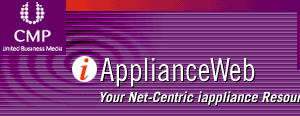



 |
 |
||
 |
 |
||

|
Dataset Nutrition Labels: What to Report and WhyWhen you start working with any dataset, it’s easy to miss important details that could affect your analysis or model performance. Dataset nutrition labels help you spot what’s inside, highlight risks, and clarify data quality from the start. By knowing what to report and why, you can avoid unexpected pitfalls and make smarter choices. But are you sure you’re capturing everything essential and communicating it the right way? The Rationale Behind Dataset Nutrition LabelsDataset Nutrition Labels serve a practical purpose by helping users evaluate the quality of datasets effectively. Similar to Nutrition Facts labels for food, these labels offer essential information regarding the dataset's origins, structure, and possible issues that may affect its reliability. In the contexts of data analysis and AI model development, having a clear understanding of a dataset is crucial for making informed decisions about its use. Dataset Nutrition Labels can include critical information such as data source, method of collection, demographics, and any noted biases. This transparency allows users to identify potential risks, such as datasets that may be skewed or not representative of the target population. Such insights are valuable in ensuring that the AI solutions built upon these datasets maintain integrity and accuracy. By implementing Dataset Nutrition Labels, organizations can work toward improving the quality of their data. This initiative can also encourage a stronger sense of trust among users, as they can rely on well-documented datasets. Ultimately, these labels contribute to establishing a standardized approach to data quality assessment, fostering more reliable outcomes in data-driven projects. Key Components Required for Effective Data LabelingTo derive genuine value from dataset labels, it's essential to concentrate on several fundamental components. Firstly, a clear description of the dataset is necessary to enable users to understand its contents effectively. Documenting the provenance of the data—including its source and the methods used for collection—contributes to building trust in the dataset. Evaluating quality involves reporting on review outcomes and establishing standards for data reliability. An ethical review is also important for identifying imbalances or risks and for addressing potential ethical concerns associated with the data. It's beneficial to define who the intended primary users are as this can influence how the data is utilized. Transparency should be prioritized throughout the labeling process, and accountability should be reinforced by providing information on licensing, funding sources, and the frequency of updates. Each of these components plays a critical role in promoting responsible data usage. Benefits of Standardized Data TransparencyStandardized data transparency, facilitated by tools such as Dataset Nutrition Labels, plays a significant role in enhancing the evaluation of data quality and reliability for organizations engaged in AI development. These labels provide a structured format that includes critical information related to data attributes, origins, and ethical considerations, which can assist practitioners in making informed decisions about data usage in AI applications. The use of Dataset Nutrition Labels allows for a thorough assessment of datasets, enabling the identification of potential biases and outlining the management practices associated with data collection and usage. This capability helps practitioners address ethical concerns by promoting better dataset composition and overall quality. Additionally, the clarity provided by these labels can improve collaboration among data practitioners, as common standards facilitate communication and understanding. Furthermore, implementing standardized data transparency contributes to fostering trust and accountability within the data ecosystem. Badges, Alerts, and Indicators: Enhancing Data ClarityDatasets can possess inherent complexities and nuances. To enhance understanding and usability, badges, alerts, and indicators serve as practical tools for emphasizing key characteristics and identifying potential issues. Badges can denote important elements such as license type, funding sources, and the status of ethical reviews, thereby contributing to improved transparency and overall dataset quality. Alerts, often utilizing visual cues like color scales, can effectively signal potential problems within the dataset. This allows users to quickly assess risks and identify possible solutions, contributing to more informed decision-making. The combination of badges and alerts is intended to clarify the strengths and limitations of datasets, ultimately aiming to increase their usability and the trust placed in them. By providing clear visual indicators, these features help users navigate complex datasets more efficiently. Addressing Data Quality Issues in AI SystemsAI systems require high-quality datasets to produce fair and accurate outcomes, and failures in data integrity can result in negative consequences, particularly for marginalized groups. It's important to address these risks by implementing practices that emphasize both nutrition and dataset quality. The Data Nutrition Project offers a standardized framework that functions similarly to food labels, allowing organizations to evaluate dataset quality and identify potential issues prior to model development. Utilizing a Data Nutrition Label can facilitate a clearer understanding of datasets, which can enhance trust and support ethical decision-making in AI applications. Many organizations currently don't have comprehensive assessment methods in place for evaluating data quality. Therefore, prioritizing the adoption of these tools is crucial for developing responsible and ethical AI systems that aim to serve a diverse society. The careful assessment of data quality not only helps identify existing biases but also contributes to the overall effectiveness and fairness of AI outcomes. Practical Use Cases Where Labels Make a DifferenceBuilding on efforts to enhance data quality and trust in AI systems, Dataset Nutrition Labels provide tangible benefits across various fields. These labels assist in the rapid identification of biased data, which facilitates informed decision-making during the development of machine learning models. In the healthcare sector, they serve as a valuable tool for evaluating datasets used in clinical trials by disclosing crucial information regarding patient demographics and outcomes. In educational settings, instructors can foster ethical data usage and promote robust data analysis practices by enabling students to engage with labeled datasets. Additionally, the ability to customize labels for specific domains, such as finance or social sciences, supports the cultivation of high-quality and responsible data usage. As such, Dataset Nutrition Labels represent a significant advancement in the pursuit of data integrity across multiple sectors. Ethical Considerations and Responsible Data PracticesWhen working with datasets in machine learning or analytics, it's essential to consider ethical implications to prevent the reinforcement of harmful biases. A Dataset Nutrition Label can serve as a tool for assessing data quality and ensuring that standardized data processes are employed. This level of transparency is crucial for identifying potential issues that could disproportionately affect marginalized communities. By holding dataset authors accountable, one promotes responsible data practices and aims to reduce negative consequences in automated systems. It's important to recognize that a lack of verification in dataset quality can lead to unintended harm. Adhering to established standards contributes to the integrity of datasets and responsible management throughout data-related projects. Collaborative Development and Community EngagementCollaborative development plays a crucial role in effective dataset labeling. By engaging the community, particularly experts from fields such as education and healthcare, organizations can create labels that accurately represent user needs and real-world relevance. Community engagement facilitates the incorporation of diverse feedback, which is essential for refining dataset labeling standards. This approach helps to identify gaps and enhance clarity within the datasets. Incorporating practical application use cases through ongoing discussions supports the establishment of a labeling process that encourages data practitioners to seek input from experts. This collaboration fosters the sharing of expertise and promotes continuous improvement in labeling methodologies. The outcome is a more robust dataset that aligns with both business objectives and research requirements, ultimately benefitting the broader community. Tools and Methodologies for Label CreationAs collaborative engagement increasingly influences dataset labeling practices, the implementation of effective tools and methodologies becomes essential. The Dataset Nutrition Project offers a Label Maker Tool currently in its beta phase, designed to facilitate the efficient creation of high-quality dataset labels. This tool incorporates a modular architecture, allowing for statistical analyses to be appropriately adapted for datasets of varying sizes and complexities. The methodology employed focuses on critical components such as description, composition, provenance, and management of data. Additionally, a badge system is integrated to enable rapid quality assessment of labels. Input from the community remains integral to this process, as ongoing user research involving data scientists aims to continuously improve the labeling procedure to enhance its practical utility. Future Directions for Data Labeling StandardsAs data science continues to evolve, it's necessary for data labeling standards to adapt in response to emerging challenges. One key aspect is ensuring dataset transparency, which can be achieved through the implementation of comprehensive Dataset Nutrition Label modules. These modules should encompass features such as usage tracking and privacy considerations. Collaboration between industry players and academic institutions is essential for refining these standards, as it can lead to the development of labels that provide reliable and standardized data. This standardization is critical for facilitating robust data analysis and the effective deployment of AI applications. Additionally, promoting public policy that mandates transparent labeling is important for enhancing data quality. Such policies can help establish a minimum requirement for labeling practices across various sectors. Conducting user research is also vital, as it allows for the development of labels that genuinely assist data practitioners in their efforts to assess and utilize data with precision and trust. This approach can ultimately improve the effectiveness of data handling and the outcomes of data-driven projects. ConclusionBy embracing dataset nutrition labels, you’re taking a vital step toward transparent, responsible data use. These labels give you the information you need to spot quality issues, understand ethical risks, and make smarter decisions for your AI projects. When you push for standardized labels and work together with the data community, you help raise the bar for trust, reliability, and accountability. Don’t overlook the power of clear, honest data labeling—it’s essential for better AI outcomes. |
|
||||||||

Terms and Conditions Privacy Statement |
||||||||||